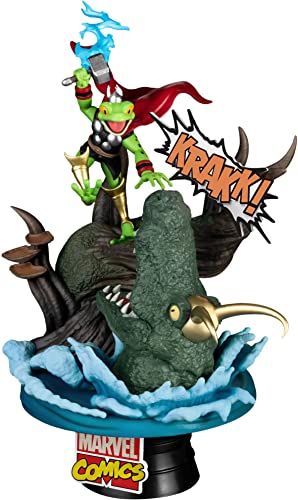<img style="visibility:hidden;width:0px;height:0px;" border=0 width=0 height=0 src="https://counters.gigya.com/wildfire/IMP/CXNID=2000002.0NXC/bT*xJmx*PTEyNzM*NTU4NDU4MTEmcHQ9MTI3MzQ1NTg1MjE1NiZwPTEwODU5MDEmZD1TcGlkZXJNYW5TY3JlZW5zaG9*Jmc9MiZv/PTM3YmY4NDEzYzhlMTRmYTdhYTZlMTRjNzU2NWQwZTJjJm9mPTA=.gif" /><object classid="clsid:d27cdb6e-ae6d-11cf-96b8-444553540000" codebase="https://download.macromedia.com/pub/shockwave/cabs/flash/swflash.cab#version=9,0,0,0" width="710" height="403" id="WFHost"><param name="FlashVars" value="id=noir1&Partner=1085901&advancedTracking=true&theme=New Classic&widgetW=700&widgetH=393&widgetX=0&widgetY=0&stickyType=bottom&WFBtnX=133&WFBtnY=440&defaultPreviewURL=https://cdnorigin.atvi.2advanced.com/marvel/spiderman/swf/widgets/screenshot_preview.jpg&useFacebookMystuff=false&URL=https://spidermandimensions.marvel.com/swf/widgets/ScreenshotWidget.swf?id=noir1"/><param name="wmode" value="transparent"/><param name="allowScriptAccess" value="always" /><param name="movie" value="https://spidermandimensions.marvel.com/swf/widgets/ScreenshotWidget.swf?id=noir1" /><embed name="WFHost" id="WFHost" width="710" height="403" src="https://spidermandimensions.marvel.com/swf/widgets/ScreenshotWidget.swf?id=noir1" flashvars="id=noir1&Partner=1085901&advancedTracking=true&theme=New Classic&widgetW=700&widgetH=393&widgetX=0&widgetY=0&stickyType=bottom&WFBtnX=133&WFBtnY=440&defaultPreviewURL=https://cdnorigin.atvi.2advanced.com/marvel/spiderman/swf/widgets/screenshot_preview.jpg&useFacebookMystuff=false&URL=https://spidermandimensions.marvel.com/swf/widgets/ScreenshotWidget.swf?id=noir1" AllowScriptAccess="always" quality="high" wmode="transparent" type="application/x-shockwave-flash" pluginspage="https://www.macromedia.com/go/getflashplayer" /></object>
Thomas Wilson (Creative Director), and Stephane Gravel (Producer) at Beenox talk about the concept behind Spider-Man: Shattered Dimensions.
What was the main idea that drove the concept of Spider-Man: Shattered Dimensions?
Right from the get go, we asked ourselves: What would get people excited about the next Spider-Man game? What would get them genuinely interested and talking to their friends about it? Listening to feedback and reviews from previous titles, it did not take long before we realized gamers and fans alike wanted variety. Most importantly, a lot of them wanted the next installment to stray away from open-world game design. Following these observations, it appeared the answer lay in something we had not seen before. We started digging into the entire comic book universe of Spider-Man for something other developers might have missed. As we dug deeper in our research we realized there existed multiple versions of Spider-Man, some of which had not been portrayed in any video game ever. We eventually came to the conclusion that delivering on the concept of playing multiple (therefore new) versions of Spider-Man would provide the fresh, new experience everyone has been waiting for.[/size]
What was the main idea behind the art direction for the game?
Once the core concept of exploring multiple dimensions of the world of Spider-Man was established, the idea of presenting them in their own unique art direction came naturally. Our goal was to get gamers’ attention right when the first screenshots would be revealed. We therefore spent some time with our Technical Art Director, Pascal Brulotte, and Chief Programming Officer, Sylvain Morel, to determine the feasibility of rendering multiple art styles within one game. Time passed and as we reached visual prototype, all teams got really excited about the end result.
Why did you guys decide to do four different universes instead of focusing on one unique one?
Our decision was motivated by the need to offer something new to gamers, something that would appeal to hardcore fans of Spider-Man and attract newcomers as well. Variety was the key here. We were fully aware fans would want to play the Amazing Spider-Man and the other universes we had selected, although quite unique in there own right, would not resonate as much if isolated into one product. At that point in time, offering a window of each universe struck us as the best idea (we even had five at the time!). It was even more appealing once we started talking about having a unique art direction for each dimension. Early tests proved that we could do it, and that got us excited: we had our main selling point.
Did the four different universes require different game engines?
Nope. We have an extremely versatile engine and an incredible technology department to back it up. Once the different art directions were established on paper for each dimension, internal tests started to see if we could mimic them on screen. What our game needed the most were multiple rendering techniques, and we quickly found out our engine could support them all.
Of the four universes, which style was the easiest to establish? Which of them was the hardest to define?
I would say that Noir and another universe we’ll announce later were not that hard to establish, technically speaking. On the other hand, the style for the Amazing universe gave us some headaches. Our initial vision was to transpose the vintage comic book look, including the typical printed-dot patterns and old-paper texture. After a few unsuccessful tests, we came to the conclusion that these full-screen filters were not working well with moving imagery. We went back to our original inspiration, re-evaluated our techniques, and found a visual treatment that delivers the look and feel we are going for. In retrospect, I must say I am quite satisfied with the end result.

















